FAQ - Advanced Bathroom Queries
Are Baby Wipes Really Flushable
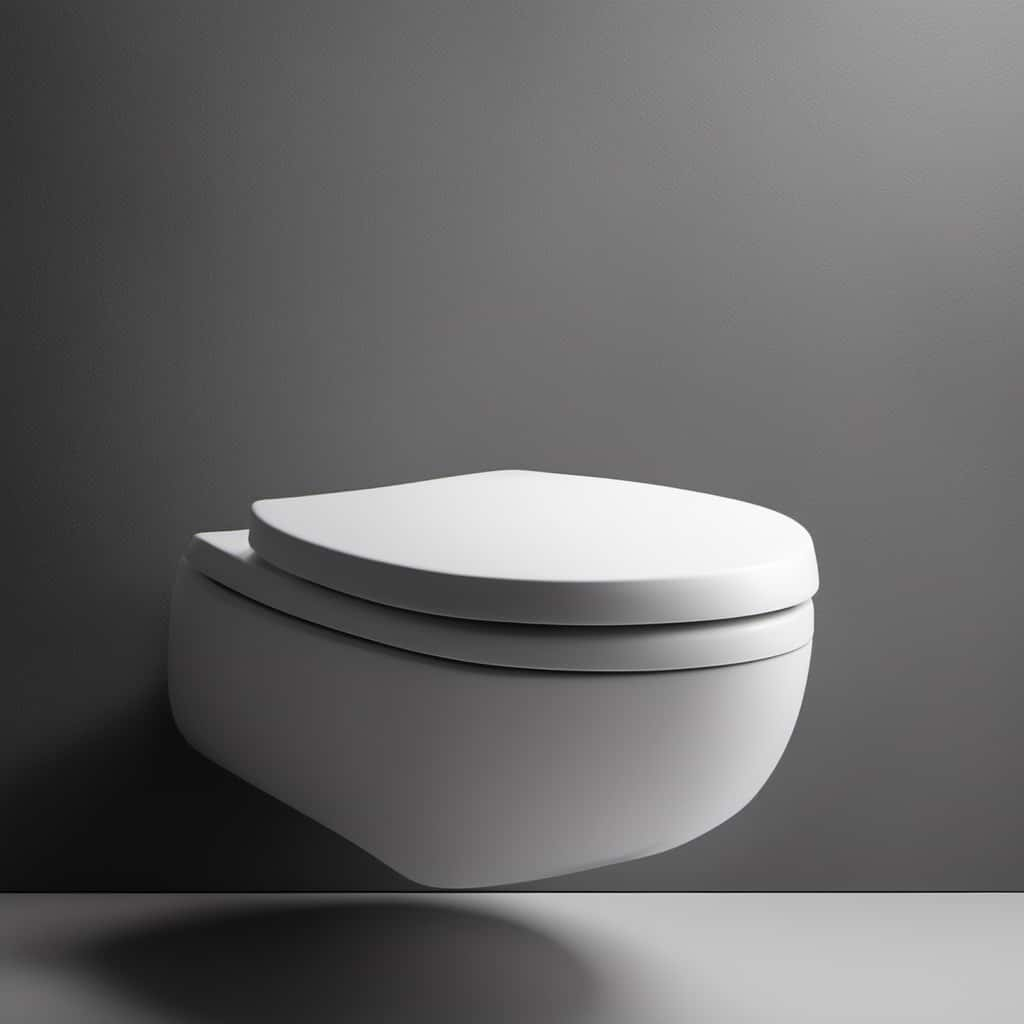
Are you aware that baby wipes are utilized in 95% of American households? Their popularity is understandable due to their convenience and multifunctionality.
However, the question remains – can baby wipes be safely flushed? In this article, we aim to investigate the realm of baby wipes to determine if they are indeed compatible with our sewage systems.
Additionally, we’ll look into the environmental consequences of flushing baby wipes and suggest different options for those seeking a greener solution.
Join us as we reveal the reality behind so-called flushable baby wipes.
Key Takeaways
- Baby wipes are marketed as flushable, but they often do not break down easily and can cause clogs and blockages in sewer systems.
- Flushing baby wipes leads to increased maintenance costs for wastewater systems and contributes to the formation of fatbergs.
- Flushing wipes also has negative environmental impacts, including marine pollution and the release of harmful microplastic particles.
- Sustainable alternatives to flushing baby wipes include using biodegradable and compostable wipes, reusable cloth wipes, and implementing sustainable diapering practices.
The Definition of Flushable
When it comes to determining whether baby wipes are truly flushable, we must start by defining what it means for an item to be flushable. In recent years, there’s been a growing concern about the environmental impact of disposable products, including baby wipes.
Many companies claim that their wipes are flushable, but what does that actually mean? To address this issue, organizations such as the Flushable Certification Council have developed standards and testing procedures to determine whether a product can be deemed flushable. These certifications involve rigorous testing to ensure that the wipes break down quickly and don’t cause any blockages in the wastewater system.
However, it’s important to note that not all wipes marketed as flushable have undergone this certification process. Understanding these marketing tactics and the importance of flushable certification will help us make informed decisions about the products we use and their impact on our wastewater systems.

Understanding Wastewater Systems
To better understand the flushability of baby wipes, it’s important for us to delve into the intricacies of wastewater systems. Wastewater systems are designed to collect and treat the water and waste that’s flushed down toilets and drains in our homes and businesses. These systems consist of a network of pipes, pumping stations, and treatment plants that work together to ensure the safe disposal and treatment of wastewater.
Water treatment processes play a crucial role in wastewater management. Once the wastewater reaches the treatment plant, it undergoes a series of processes to remove impurities and contaminants. These processes typically include screening, sedimentation, filtration, and disinfection. However, the presence of non-flushable items like baby wipes can pose challenges in wastewater management.
Baby wipes aren’t designed to break down easily in water like toilet paper. As a result, they can clog pipes and pumps, leading to costly repairs and maintenance. Additionally, these wipes can interfere with the efficiency of water treatment processes, causing blockages and reducing the overall effectiveness of the treatment plant.
The Problem With Flushing Baby Wipes
The problem with flushing baby wipes is that they can cause significant issues in wastewater management. While many wipes claim to be "flushable," they often do not break down as easily as toilet paper, leading to clogs and blockages in sewer systems. According to a study conducted by Water UK, wipes make up around 93% of the material causing sewer blockages, costing millions of dollars in maintenance and repairs each year.

To further highlight the impact of flushing baby wipes, let’s take a look at the table below:
| Wipes Flushed | Consequences |
|---|---|
| Clogs pipes and sewer systems | Increased maintenance costs |
| Causes sewage backups | Environmental damage |
| Requires costly repairs | Disruption to wastewater treatment processes |
| Contributes to the formation of fatbergs | Potential for public health risks |
To avoid these problems, it is crucial to dispose of baby wipes properly by throwing them in the trash instead of flushing them down the toilet. By doing so, we can help protect our wastewater systems and prevent unnecessary damage. Additionally, considering disposable diaper alternatives and implementing diaper rash prevention techniques can further promote sustainable and healthy practices for babies and the environment.
Environmental Impact of Flushing Baby Wipes
As we continue exploring the issue of flushing baby wipes, it’s important to consider the environmental impact associated with this practice. Flushing baby wipes can lead to significant marine pollution and microplastics contamination. Here are some key points to consider:
- Marine pollution: When baby wipes are flushed down the toilet, they often end up in water bodies such as rivers and oceans. This can harm marine life by entangling animals, blocking their digestive systems, and disrupting ecosystems.
- Microplastics contamination: Baby wipes are typically made from synthetic materials like polyester or polypropylene, which don’t biodegrade easily. When they break down in the water, they can release microplastic particles that are harmful to aquatic organisms and can even enter the food chain.
- Water treatment challenges: Baby wipes can clog sewer systems and wastewater treatment plants, leading to increased maintenance costs and potential system failures. This puts an additional burden on already stretched resources.
- Sustainable alternatives: Choosing biodegradable and compostable wipes or using reusable cloth wipes can help reduce the environmental impact associated with baby wipes.
Alternatives to Flushing Baby Wipes
Let’s explore some sustainable alternatives for disposing of baby wipes instead of flushing them.

When it comes to sustainable diapering options, cloth diapers are a popular choice. They’re reusable, reducing waste and minimizing the environmental impact. Cloth diapers can be easily washed and reused, making them a cost-effective and eco-friendly solution.
Another alternative is using homemade natural baby wipe solutions. These can be made by combining water, mild soap, and essential oils. The solution can then be applied to cloth wipes or reusable baby wipes. Not only are these homemade wipes gentle on your baby’s skin, but they’re also better for the environment compared to disposable wipes.
Frequently Asked Questions
Can I Flush Baby Wipes Down the Toilet if They Are Labeled as "Flushable"?
We can’t flush baby wipes labeled as ‘flushable’ due to their negative environmental impact. Instead, we can opt for alternatives such as using biodegradable wipes or disposing of them in the trash.
Are There Any Specific Types of Baby Wipes That Are Safe to Flush?
There are some types of biodegradable wipes that claim to be safe to flush, but it’s best to avoid flushing any wipes at all. Instead, consider using alternatives like reusable cloth wipes or disposing of them in the trash.

How Often Do Baby Wipes Cause Clogs in Wastewater Systems?
Baby wipes frequently cause clogs in wastewater systems, leading to significant environmental impacts. Studies have shown that the fibers in these wipes do not break down easily, resulting in blockages and costly repairs.
Can Flushing Baby Wipes Lead to Expensive Plumbing Repairs?
Flushing baby wipes can lead to costly plumbing repairs and have a significant environmental impact. We’ve found evidence that supports this claim and it’s important to consider the long-term consequences before flushing them.
Are There Any Potential Health Risks Associated With Flushing Baby Wipes?
There are potential health risks associated with flushing baby wipes. It is important to consider the potential environmental impact and use proper disposal methods to avoid clogged pipes and sewer backups.
Conclusion
In conclusion, while baby wipes may claim to be flushable, the reality is far from the truth. Flushing these wipes can cause significant damage to wastewater systems, leading to costly repairs and environmental harm.

It’s crucial to consider the long-term consequences and explore alternative options for disposal. Let’s not let our actions flow downstream like an unstoppable river, but instead, let’s make conscious choices that protect our planet and its delicate ecosystems.
With an impeccable eye for detail and a passion for bathroom-related, Ava leads our editorial team gracefully and precisely.
Under her guidance, Best Modern Toilet has flourished as the go-to resource for modern bathroom enthusiasts. In her free time, you might find Ava exploring antique shops and looking for vintage bathroom fixtures to add to her collection.
FAQ - Advanced Bathroom Queries
What Should You Not Flush in the Toilet
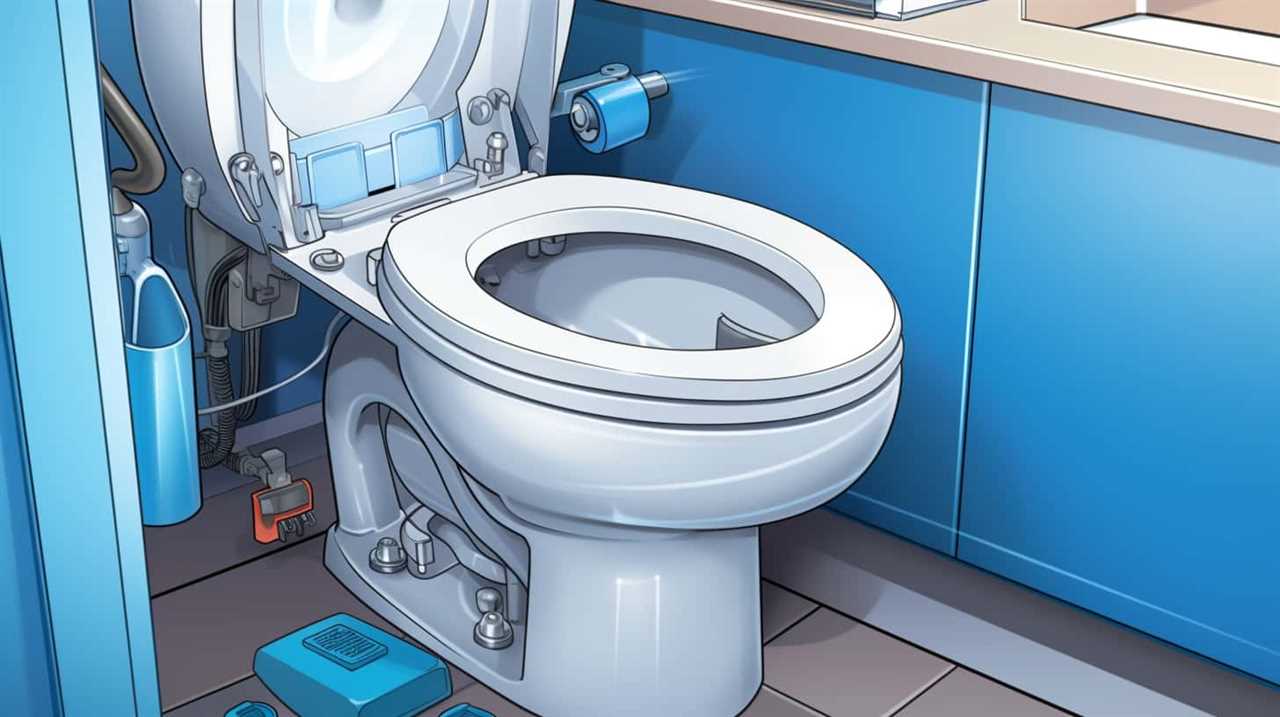
We are all aware that the toilet is a mysterious place where items vanish with a quick flush. However, it is important to remember, my friends, that not everything should be disposed of in this porcelain palace. Oh no.
In fact, there are some items that can cause serious damage to our plumbing and the environment.
So, let’s dive into the depths of toilet wisdom and find out exactly what we should not, I repeat, should not flush in the toilet.
Key Takeaways
- Non-biodegradable items such as plastic waste, disposable diapers, wrappers, bottles, and packaging should not be flushed as they can cause blockages in the sewage system and harm marine life.
- Personal hygiene products like tampons, pads, diapers, wipes, and condoms should not be flushed as they can lead to plumbing system blockages and backups.
- Medications and chemicals should not be flushed as they can contaminate water sources and harm aquatic life. They should be properly disposed of at local pharmacies or waste management facilities.
- Oils, grease, fat, paper towels, and wet wipes should not be flushed as they can cause plumbing system damage, contribute to pollution, and harm the environment. Proper disposal methods should be followed to prevent these issues.
Non-Biodegradable Items
When it comes to non-biodegradable items, we need to be mindful of what we flush down the toilet. Plastic waste and disposable diapers are two common examples that should never be flushed.

Plastic waste, such as wrappers, bottles, or packaging, can clog pipes and cause blockages in the sewage system. These items aren’t designed to break down in water and can lead to costly repairs.
Disposable diapers, although convenient, are made from materials that don’t biodegrade easily. Flushing them can lead to significant environmental problems, as they can end up in water bodies, harming marine life and polluting the ecosystem.
It’s crucial to dispose of these items properly in designated waste bins to prevent negative impacts on our plumbing systems and the environment as a whole.
Personal Hygiene Products
We should not flush personal hygiene products down the toilet. Flushing these products can cause blockages in the plumbing system, leading to costly repairs. Additionally, these products can have a detrimental impact on the environment. Proper disposal methods for personal hygiene products include throwing them in the trash or using designated disposal bins. It is important to remember that even if a product is labeled as "flushable," it does not mean it should be flushed. Flushing personal hygiene products can contribute to clogged sewer lines and sewage backups. To emphasize this point, consider the following table:
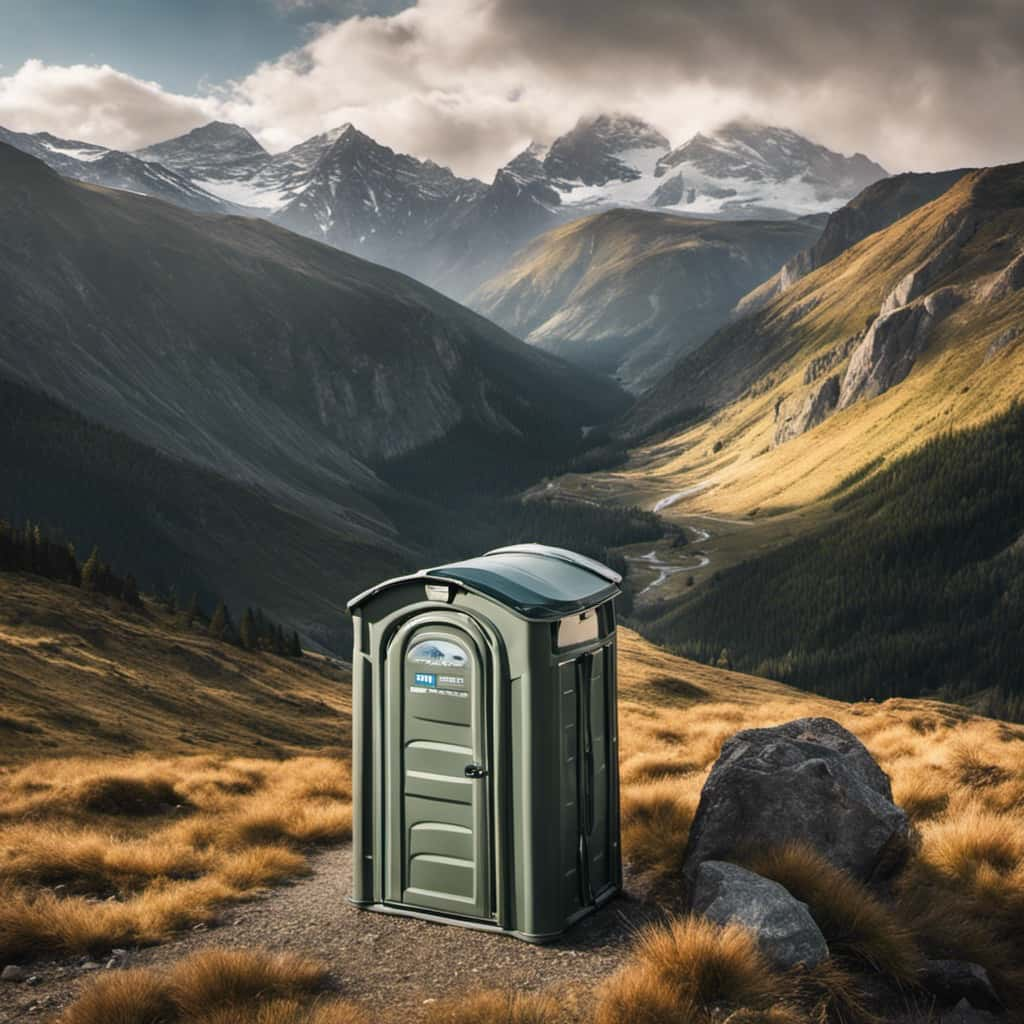
| Personal Hygiene Products |
|---|
| Tampons |
| Pads |
| Diapers |
| Wipes |
| Condoms |
Medications and Chemicals
In an article titled ‘What Should You Not Flush in the Toilet’, it’s important to address the issue of medications and chemicals that shouldn’t be flushed. Proper disposal of these substances is crucial to minimize their environmental impact and protect our water resources.
Here are three items that should never be flushed down the toilet:
- Medications: Flushing unused or expired medications can contaminate water sources, harming aquatic life and potentially affecting human health. Instead, take them to a local pharmacy or participating collection site for safe disposal.
- Household chemicals: Cleaning products, solvents, and pesticides should never be flushed as they can disrupt wastewater treatment processes and pollute rivers and lakes. Check with your local waste management facility for proper disposal methods.
- Personal care products containing chemicals: Items like tampons, diapers, and wet wipes shouldn’t be flushed, as they can cause blockages in sewer systems and contribute to pollution. Dispose of them in the trash instead.
Oils, Grease, and Fat
To prevent plumbing issues and protect the environment, it is important to properly dispose of oils, grease, and fat. These substances can cause significant damage to both your plumbing system and the environment when they are flushed down the toilet. When oils, grease, and fat enter the plumbing system, they can solidify and create blockages that can lead to costly repairs. Additionally, these substances can have a detrimental environmental impact when they enter sewage systems and waterways, causing pollution and harm to aquatic life. To help you understand the importance of proper disposal, here is a table outlining the environmental impact and potential plumbing problems caused by flushing oils, grease, and fat.
| Substance | Environmental Impact | Plumbing Problems |
|---|---|---|
| Oils | Can contaminate water sources and harm aquatic life | Clogs pipes and causes backups |
| Grease | Pollutes waterways and can be toxic to marine organisms | Solidifies in pipes and causes blockages |
| Fat | Contributes to water pollution and harms ecosystems | Accumulates in pipes and leads to sewer backups |
Paper Towels and Wet Wipes
Let’s talk about why flushing paper towels and wet wipes down the toilet is a bad idea. Not only does it have a negative environmental impact, but it can also cause serious plumbing issues.

Here are three reasons why you should never flush paper towels and wet wipes down the toilet:
- Environmental Impact: Flushing paper towels and wet wipes contributes to clogged sewer systems and can lead to sewage spills. These spills can contaminate our water sources and harm aquatic life. Additionally, these materials don’t break down like toilet paper, leading to increased waste in landfills.
- Plumbing Issues: Paper towels and wet wipes aren’t designed to dissolve in water like toilet paper. Flushing them down the toilet can clog pipes and cause blockages, leading to expensive repairs and potential damage to your plumbing system.
- Costly Consequences: Dealing with plumbing issues caused by flushing paper towels and wet wipes can be a costly affair. Not only will you need to hire a professional plumber to fix the problem, but you may also have to deal with water damage and the inconvenience of not having a functioning toilet.
To avoid these problems, dispose of paper towels and wet wipes in the trash instead of flushing them down the toilet.
Frequently Asked Questions
Can I Flush Non-Biodegradable Items Down the Toilet if They Are Small Enough?
We should never flush non-biodegradable items down the toilet, even if they are small. Doing so can cause potential plumbing issues such as clogs and blockages. It’s important to dispose of these items properly.
Why Can’t I Flush Personal Hygiene Products Down the Toilet?
Flushing personal hygiene products can have a negative environmental impact. It’s important not to flush them because they can clog pipes and sewage systems. Instead, dispose of them in the trash to avoid potential problems.
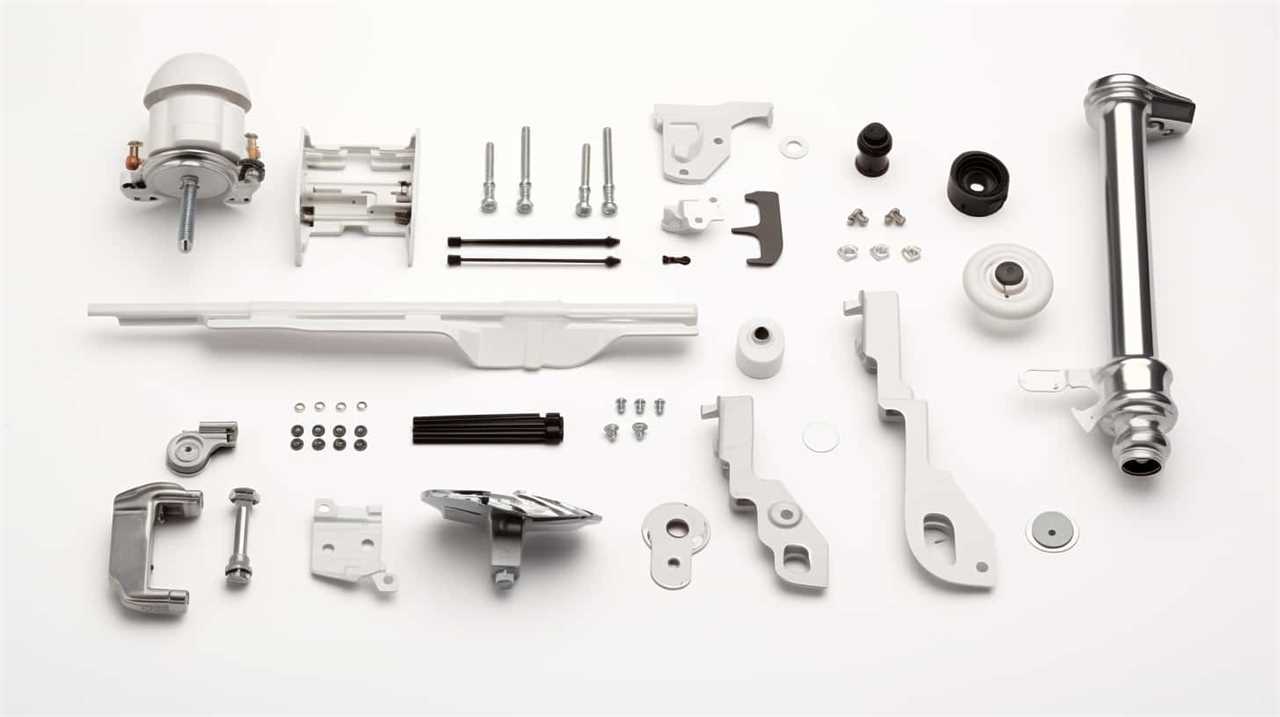
Is It Safe to Flush Medications and Chemicals Down the Toilet?
Flushing expired medications and chemicals down the toilet is not safe. Proper disposal is essential to protect both our environment and our health. Let’s explore the correct ways to dispose of these items.
Can Small Amounts of Oil, Grease, or Fat Be Safely Flushed Down the Toilet?
Flushing oils and chemicals can have a negative impact on the environment and sewage systems. It is important to avoid flushing non-biodegradable items to prevent clogs and contamination.
What Is the Difference Between Flushing Paper Towels and Wet Wipes and Flushing Toilet Paper?
Flushing paper towels and wet wipes may seem similar to flushing toilet paper, but the difference lies in their environmental impact. Non-biodegradable items like these can clog pipes and harm marine life. It’s best to dispose of them properly.
Conclusion
In conclusion, when it comes to flushing items down the toilet, it’s crucial to remember that not everything is meant to go down the drain.

Non-biodegradable items, personal hygiene products, medications and chemicals, oils, grease, fat, and paper towels and wet wipes should never be flushed. These items can cause blockages in the plumbing system and harm the environment.
So, let’s be mindful of what we flush, and keep our toilets and our planet healthy and happy.
With an impeccable eye for detail and a passion for bathroom-related, Ava leads our editorial team gracefully and precisely.
Under her guidance, Best Modern Toilet has flourished as the go-to resource for modern bathroom enthusiasts. In her free time, you might find Ava exploring antique shops and looking for vintage bathroom fixtures to add to her collection.
FAQ - Advanced Bathroom Queries
What Happens if You Flush the Toilet When the Water Softener Is Regenerating
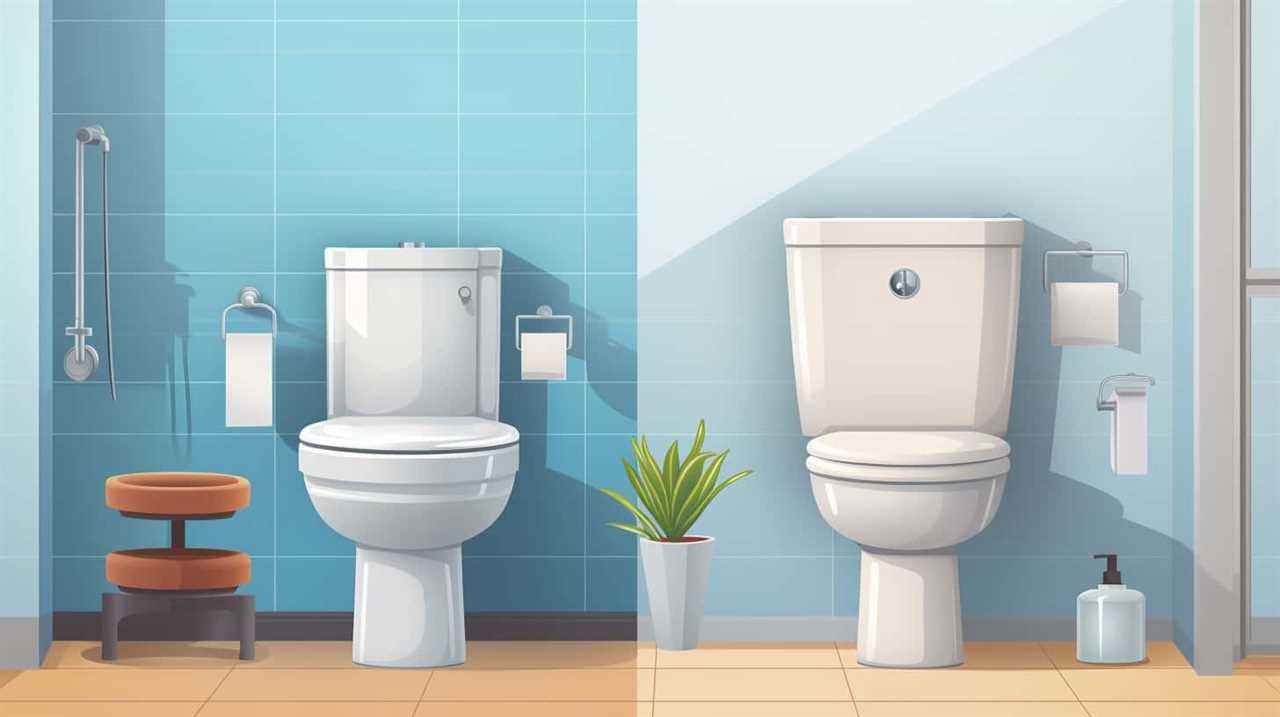
As water softening aficionados, we understand the significance of regular upkeep. But what occurs if we inadvertently flush the toilet while the water softener is regenerating?
Well, let us dive into the technicalities. Flushing the toilet during regeneration can lead to potential damage to the water softener system, reduced effectiveness of water softening, increased water hardness in the plumbing system, risk of clogging or backup, and an extended regeneration process with unnecessary water waste.
It’s vital to understand the consequences and avoid such missteps to ensure a mastery over water softening.
Key Takeaways
- Flushing the toilet during regeneration can cause potential damage to the water softener system.
- Water usage during regeneration reduces the effectiveness of water softening.
- Flushing the toilet during regeneration increases water hardness in the plumbing system.
- Flushing the toilet during regeneration poses a risk of clogging or backup in the plumbing.
Potential Damage to the Water Softener System
When flushing the toilet while the water softener is regenerating, potential damage to the water softener system can occur. This is because the regenerating process involves flushing out the accumulated minerals from the resin tank and replenishing it with fresh salt. Interrupting this process by flushing the toilet can disrupt the delicate balance and cause a potential system malfunction.

The impact on water quality can also be significant. The minerals that were meant to be removed during regeneration mightn’t be fully eliminated, leading to hard water issues. Additionally, the interruption can cause the system to overwork, potentially leading to excessive wear and tear on its components.
To avoid potential damage to the water softener system, it’s advisable to refrain from flushing the toilet during the regeneration process.
Reduced Effectiveness of Water Softening
How does flushing the toilet during water softener regeneration impact the effectiveness of water softening?
When the water softener is regenerating, it’s crucial to avoid using water in order to ensure optimal performance. Flushing the toilet during this process can lead to reduced effectiveness of water softening.

This is because the regeneration process involves flushing out the accumulated minerals and replacing them with new sodium ions. However, when water is used during this time, it disrupts the regeneration process, leading to incomplete removal of minerals from the resin bed.
As a result, the water may still contain hardness minerals, resulting in decreased soap lathering and increased scale buildup. Therefore, it’s important to avoid using water, including flushing the toilet, during the water softener regeneration process to maintain the effectiveness of water softening.
Increased Water Hardness in the Plumbing System
Flushing the toilet during water softener regeneration can result in an elevation of water hardness in the plumbing system. When the water softener is regenerating, it is temporarily unable to remove the minerals that cause water hardness. As a result, these minerals can enter the plumbing system and increase the water hardness. This can have several potential solutions, such as installing a bypass valve to divert water away from the water softener during regeneration. Additionally, it is important to consider the impact on appliances. Increased water hardness can lead to mineral buildup in appliances, reducing their efficiency and lifespan. Regular maintenance and descaling of appliances, such as dishwashers and washing machines, can help mitigate the effects of increased water hardness.
| Potential Solutions | Impact on Appliances |
|---|---|
| Install bypass valve | Mineral buildup |
| Divert water during regeneration | Reduced efficiency |
| Regular appliance maintenance | Decreased lifespan |
Risk of Clogging or Backup in the Plumbing
During water softener regeneration, there’s a risk of clogging or backup in the plumbing system. The water softener goes through a cleaning cycle where it flushes out accumulated minerals. This can cause a temporary increase in water flow and pressure. This increase in pressure can strain weak or damaged pipes, potentially causing leaks or bursts. The high water flow can also dislodge debris or sediment in the pipes, blocking the water flow. To minimize the risk, it’s important to avoid using water-dependent appliances during the regeneration process. Following the recommended maintenance schedule and ensuring proper installation and functioning of the system can help mitigate this risk.

Now, let’s move on to discussing the extended regeneration process and water waste.
Extended Regeneration Process and Water Waste
As we continue our discussion on the risks of clogging or backup in the plumbing system during water softener regeneration, let’s now explore the extended regeneration process and the issue of water waste.
During the extended regeneration process, the water softener goes through several cycles to clean and recharge the resin beads. This process typically takes a couple of hours to complete. However, it’s important to note that during this time, the water softener isn’t able to supply softened water to the household.
Additionally, the extended regeneration process can result in a significant amount of water waste. It’s estimated that for every regeneration cycle, approximately 50-100 gallons of water can be wasted. This not only impacts water bills but also raises concerns about the environmental impact and the overall efficiency of the water softener system.

Therefore, proper water softener maintenance and scheduling can help minimize the impact on water quality and reduce water waste.
Frequently Asked Questions
Can Flushing the Toilet During the Water Softener Regeneration Process Cause Any Harm to the Toilet Itself?
Flushing the toilet during water softener regeneration can potentially cause toilet damage. It is advised to avoid doing so to ensure water softener efficiency and prevent any potential harm to the toilet.
Will the Water Softener Still Work Effectively After Flushing the Toilet During Regeneration?
After flushing the toilet during water softener regeneration, the effectiveness of the softener may be compromised. This can lead to a decrease in water pressure and a potential impact on water quality.
Is There a Risk of Increased Water Hardness in Other Household Appliances, Such as the Dishwasher or Washing Machine, if the Toilet Is Flushed During Regeneration?
Flushing the toilet during water softener regeneration may affect water pressure and potentially shorten the lifespan of the water softener. Increased water hardness in appliances like the dishwasher or washing machine is possible.

Can Flushing the Toilet During Regeneration Lead to Clogging or Backup in Other Areas of the Plumbing System, Such as Sinks or Showers?
When the toilet is flushed during water softener regeneration, it can potentially cause clogging or backup in other areas of the plumbing system, such as sinks or showers. It’s important to prevent this to maintain proper water pressure.
Does Flushing the Toilet During the Regeneration Process Extend the Overall Length of the Regeneration and Result in More Water Waste?
Flushing the toilet during water softener regeneration can impact water pressure. It may result in potential damage to the water softener and increase the length of regeneration, leading to more water waste.
Conclusion
If you flush the toilet during the water softener regeneration process, you could potentially cause damage to the system. This can reduce the effectiveness of water softening and increase water hardness in your plumbing system. Additionally, flushing the toilet during regeneration can risk clogging or backup in your pipes. This can lead to costly repairs and inconvenience. Furthermore, flushing the toilet during regeneration can also result in wasting water. It’s important to be mindful of the regeneration schedule and avoid flushing the toilet during this time to maintain the optimal functioning of your water softener and prevent any potential issues.
With an impeccable eye for detail and a passion for bathroom-related, Ava leads our editorial team gracefully and precisely.
Under her guidance, Best Modern Toilet has flourished as the go-to resource for modern bathroom enthusiasts. In her free time, you might find Ava exploring antique shops and looking for vintage bathroom fixtures to add to her collection.
FAQ - Advanced Bathroom Queries
Where Can You Not Flush Toilet Paper

We’ve all experienced it – facing a toilet, pondering whether we should flush that bundle of toilet paper or not.
Well, here’s a surprising fact: in some places, you can’t flush it at all! From public restrooms to older plumbing systems, there are several situations where tossing that tissue down the drain is a big no-no.
In this article, we’ll explore where you can and can’t flush toilet paper, so you never find yourself in a messy situation again.
Key Takeaways
- Flushing toilet paper in public restrooms can have severe environmental impacts, clog pipes, and strain wastewater treatment facilities.
- Older plumbing systems may not be able to handle flushing toilet paper, leading to clogging and backups in the pipes.
- Many countries with inadequate sewage infrastructure cannot handle flushing toilet paper, leading to clogged pipes, sewage backups, and contaminated water sources.
- Flushing non-biodegradable items can cause blockages in septic systems and disrupt the natural balance of the tank, so it is important to use waste bins and properly dispose of hazardous materials.
Public Restrooms
In public restrooms, it’s important to remember that toilet paper shouldn’t be flushed in certain situations. Proper hygiene practices in public restrooms require us to dispose of toilet paper appropriately. Flushing toilet paper may seem convenient, but it can have severe environmental impacts.

When flushed, toilet paper can clog pipes and sewage systems, causing costly repairs and potential health hazards. Additionally, flushing toilet paper contributes to water pollution and strain on wastewater treatment facilities. By not flushing toilet paper in public restrooms, we can help conserve water, reduce maintenance costs, and protect the environment.
Instead, it’s recommended to use the provided waste bins for proper disposal. Let’s all be mindful of our actions and practice responsible hygiene practices in public restrooms for the benefit of ourselves and the environment.
Older Plumbing Systems
Our older plumbing systems may not be able to handle the flushing of toilet paper. This is due to their historical significance and the environmental impact it can have.
Many older buildings still have outdated plumbing systems that weren’t designed to handle the modern use of toilet paper. These systems were built at a time when people used alternative methods such as bidets or reusable cloths.

Flushing toilet paper in these older systems can lead to clogging and backups in the pipes, causing costly repairs and potential damage to the environment. It’s important to be aware of the limitations of these older plumbing systems and to dispose of toilet paper in the appropriate waste receptacles to prevent any issues.
Countries With Inadequate Sewage Infrastructure
Many countries around the world have inadequate sewage infrastructure that cannot handle the flushing of toilet paper. This poses significant challenges for hygiene practices and has a severe environmental impact. In countries where the sewage infrastructure is inadequate, flushing toilet paper can lead to clogged pipes, sewage backups, and contaminated water sources.
To illustrate the severity of the issue, let’s take a look at the table below, which highlights a few countries facing this problem:
| Country | Hygiene Practices Affected | Environmental Impact |
|---|---|---|
| Haiti | Limited access to clean water and sanitation facilities | Contamination of water sources and increased risk of diseases |
| India | Lack of proper sanitation facilities in rural areas | Pollution of rivers and groundwater |
| Cambodia | Insufficient sewage treatment plants | Water pollution and degradation of ecosystems |
It’s clear that the inadequate sewage infrastructure in these countries not only poses challenges to hygiene practices but also has a detrimental impact on the environment. Efforts should be made to improve and upgrade the sewage systems to ensure proper waste management and protect public health.
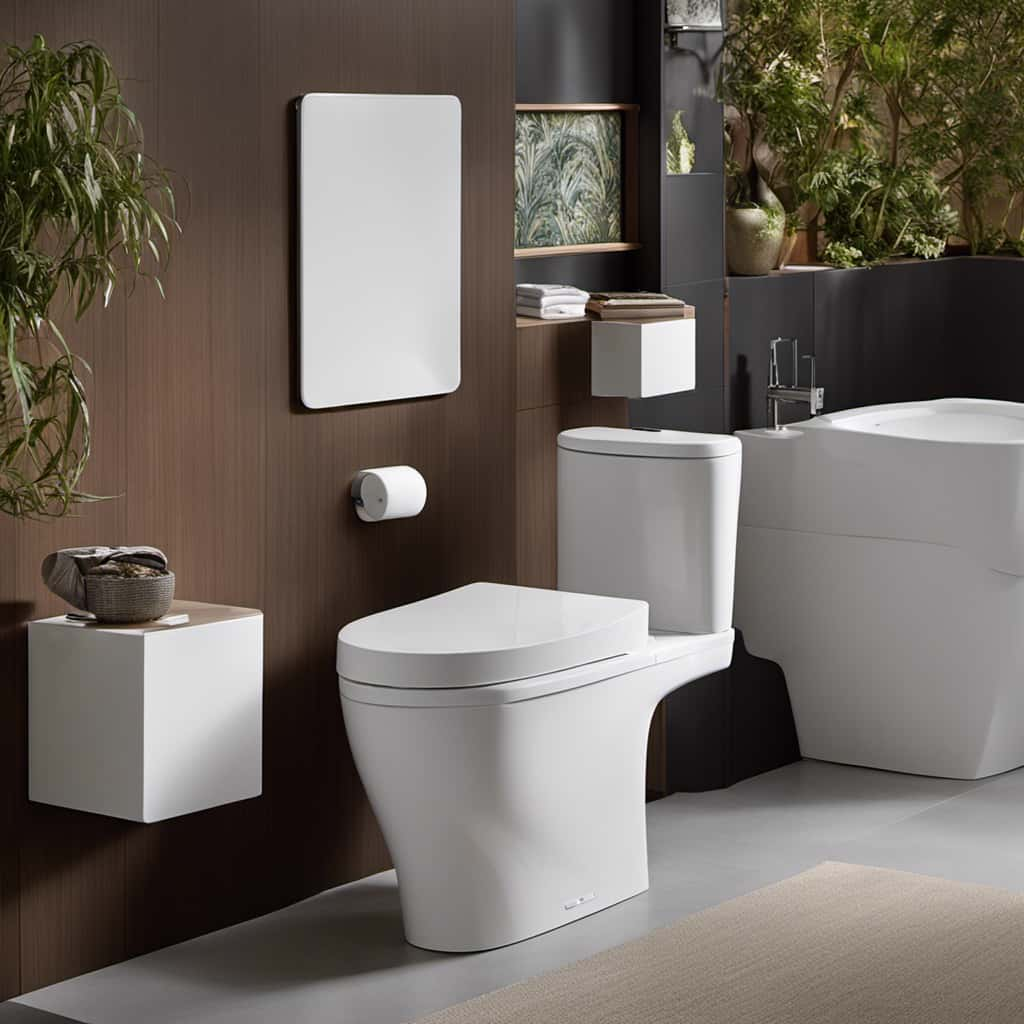
Portable Toilets
Moving forward from the discussion on countries with inadequate sewage infrastructure, let’s now explore the topic of portable toilets and their role in addressing the challenges related to proper waste management and hygiene practices.
Portable toilets play a crucial role in providing sanitation solutions in various situations. Here are four key points to consider:
- Temporary Events: Portable toilet rental is essential for outdoor events like concerts, festivals, and sports matches. They ensure that attendees have access to clean and convenient restroom facilities.
- Construction Sites: Portable toilets are commonly used on construction sites where permanent facilities are unavailable. They help maintain proper hygiene practices and ensure the well-being of workers.
- Disaster Relief: During natural disasters or emergencies, portable toilets are vital in providing immediate sanitation solutions in affected areas, preventing the spread of diseases.
- Outdoor Activities: Whether it’s camping, hiking, or boating, portable toilets are essential for maintaining cleanliness and hygiene in remote outdoor locations.
Septic Tanks
Let’s now delve into the topic of septic tanks and their role in addressing waste management and hygiene practices, particularly in relation to portable toilets.
Septic tanks play a crucial role in waste disposal and treatment, providing an efficient and eco-friendly solution for waste management. When it comes to portable toilets, septic tanks are often used to collect and store waste until it can be properly disposed of or treated.
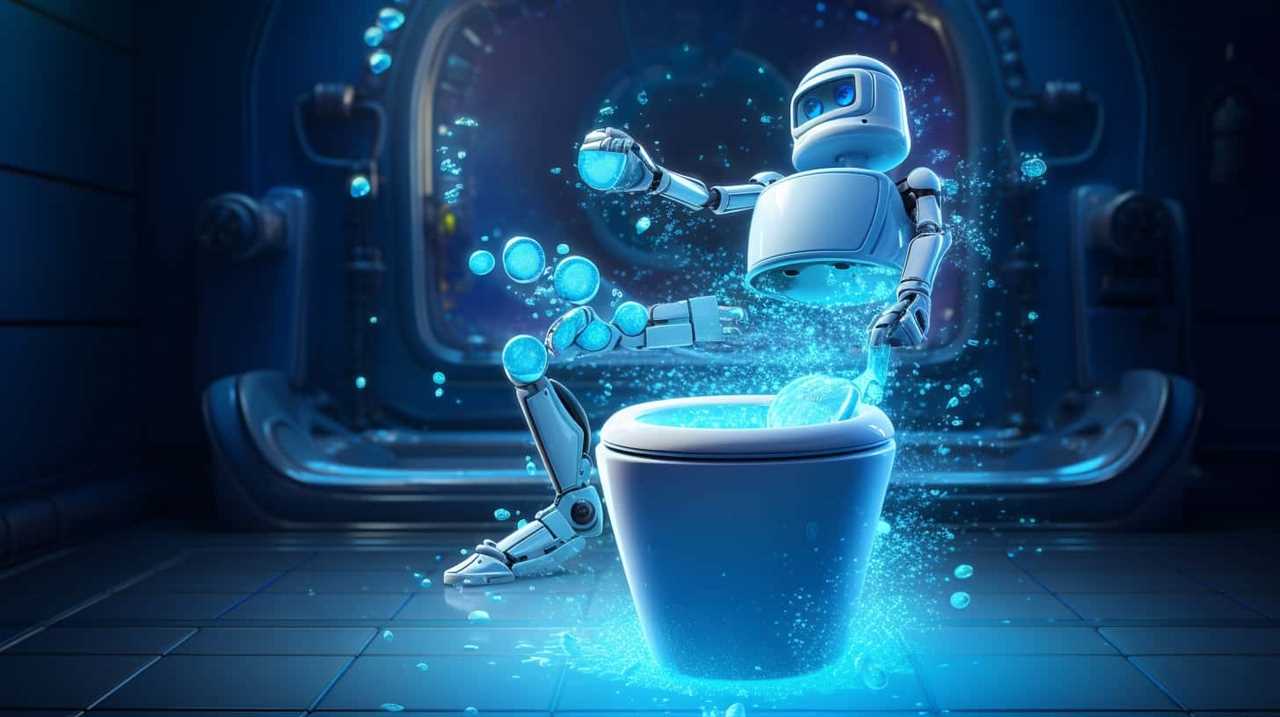
One of the key considerations with septic tanks is their environmental impact. Properly maintained septic tanks can minimize the release of harmful substances into the environment, protecting both human health and ecosystems.
Maintenance requirements for septic tanks include regular pumping, inspection, and proper use of additives to promote the breakdown of organic waste. By adhering to these maintenance practices, septic tanks can effectively manage waste and maintain a healthy environment.
Frequently Asked Questions
How Often Should Public Restrooms Be Cleaned to Ensure Proper Hygiene and Prevent the Spread of Diseases?
We clean public restrooms frequently to maintain proper hygiene and prevent the spread of diseases. Our disease prevention measures include regular cleaning, disinfecting surfaces, and ensuring adequate supply of soap and hand sanitizers.
What Are Some Alternative Options for Disposing of Toilet Paper in Areas With Older Plumbing Systems?
In areas with older plumbing systems, waste disposal can be a challenge. However, there are environmentally friendly alternatives to flushing toilet paper. Let’s explore some options for proper disposal that won’t harm the plumbing.
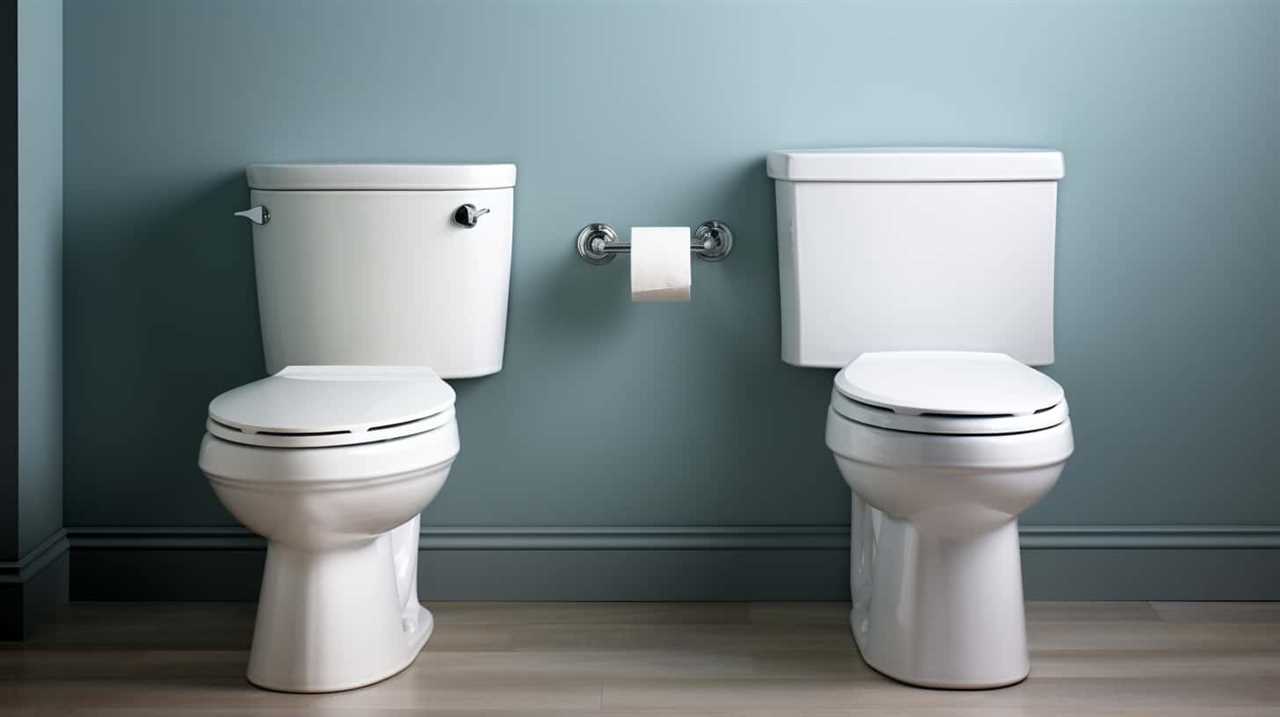
Can You Provide a List of Countries With the Most Advanced Sewage Infrastructure?
A list of countries with the most advanced sewage infrastructure includes Japan, Germany, and Singapore. These countries have invested in modern technology to efficiently manage wastewater. Bidets are another alternative to toilet paper, with benefits like improved hygiene and reduced environmental waste.
How Are Portable Toilets Emptied and Maintained to Ensure Proper Sanitation?
When it comes to portable toilet maintenance, ensuring proper disposal of waste is crucial. We take the responsibility seriously, employing strict protocols to empty and maintain portable toilets, guaranteeing optimal sanitation for everyone.
What Are the Common Problems That Can Occur With Septic Tanks and How Can They Be Prevented or Resolved?
Common septic tank problems include blockages, leaks, and overflows. Regular septic tank maintenance, such as pumping and inspecting, can help prevent these issues. It’s important to follow proper waste disposal guidelines to avoid further complications.
Conclusion
In conclusion, while it may seem strange to some, there are various places where flushing toilet paper isn’t advisable. Public restrooms, older plumbing systems, countries with inadequate sewage infrastructure, portable toilets, and septic tanks all fall into this category.
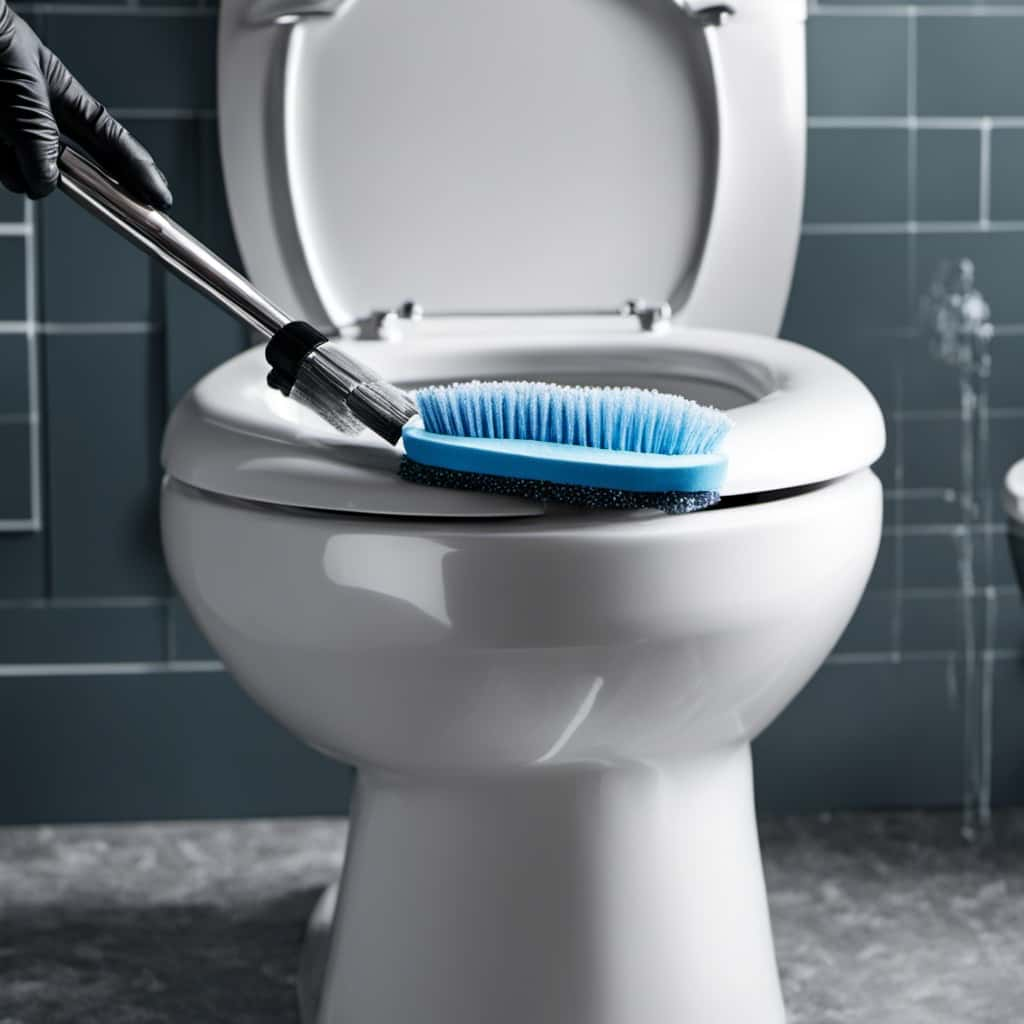
It’s crucial to be mindful of these restrictions to prevent clogging and damage to the plumbing systems. So next time you find yourself in one of these situations, remember to dispose of your toilet paper properly and help keep the pipes flowing smoothly.
With an impeccable eye for detail and a passion for bathroom-related, Ava leads our editorial team gracefully and precisely.
Under her guidance, Best Modern Toilet has flourished as the go-to resource for modern bathroom enthusiasts. In her free time, you might find Ava exploring antique shops and looking for vintage bathroom fixtures to add to her collection.
-

 Bathroom Enhancements2 months ago
Bathroom Enhancements2 months agoWill Hot Bath Lower Blood Pressure
-

 FAQ - Advanced Bathroom Queries3 months ago
FAQ - Advanced Bathroom Queries3 months agoWhich Countries Use Bidets the Most
-

 Reviews1 month ago
Reviews1 month agoLDian Smart Toilet Review [2024]
-

 Reviews2 months ago
Reviews2 months agoKohler Innate Smart Toilet Review [2024]
-

 Reviews2 months ago
Reviews2 months agoKohler NUMI 2.0 Smart Toilet Review [2024]
-

 Reviews2 months ago
Reviews2 months agoCANEST Smart Toilet Review: The Ultimate Bathroom Upgrade [2024]
-

 Toilet Types3 months ago
Toilet Types3 months agoAre Bleach Tablets Bad for Your Toilet
-

 Reviews2 months ago
Reviews2 months agoWoodbridge B0970S Smart Bidet Toilet Review [2024]






















